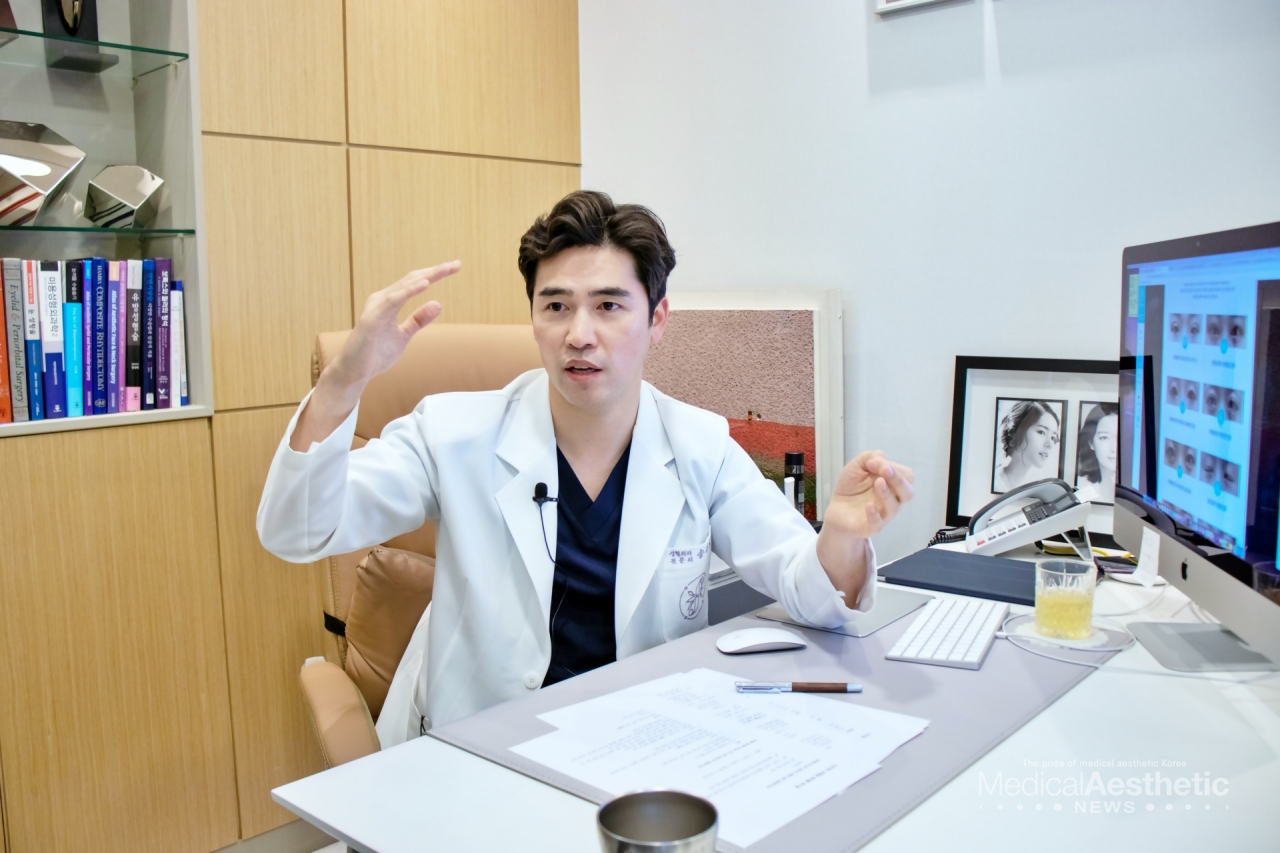For a good result, should be clear the direction of your wish.
Double eyelid surgery is one of the most popular plastic surgeries in Korea. Thus, many patients think it is easy, but there are many cases of revision surgery due to unsatisfaction or side effects because of lack of deep consideration.
The biggest reason for double eyelid surgery is dissatisfaction with the previous surgery. It may simply be because of the shape of the double eyelids, but there are also aesthetic or functional issues. Asymmetry, excessive correction, and severe surgical scars are, but many other types require revision surgery.
One of the common symptoms of revision double eyelid surgery is thick double eyelids, also known as ‘sausage eye.’ It is mainly caused by the excessive height of the double eyelid line in the previous surgery. These symptoms appear when the double eyelids are bulky and look plump or when the eyelids become sunken and saggy over time.
There are many cases of loosened eyelids. When the eyes droop, they naturally loosen, and when the fixation was weak during the previous surgery or when surgery was performed with a line that did not fit the shape of the eye, it loosened well. According to Dr. Kyeong Ho Song of Four-season plastic surgery clinic, each eye has a double eyelid line that can stretch comfortably, but it loosened well because a line other than that line was forcibly created.
There are also cases where there are multiple double eyelid lines, but this type usually occurs when there is too little fat on the inside. There are no wrinkles if the cotton is complete on a pillow, but if it is insufficient, there are wrinkles; if too much fat is removed to make the eyes lighter during the first surgery, double eyelids will appear. Multiple eyelids may occur even when the previous ptosis correction is removed.
Occasionally, over-correction or restrained correction is required after double eyelid surgery and ptosis correction. When the power to open the eyes is mostly weak, ptosis correction is performed. Over-correction is performed when the correction is excessive, and whites are seen on the pupil or around the pupil in four directions, or when the eyes are opened too much, and the eyes look upside down, and the eyes do not close well. Restrained correction refers to the case where the image cannot be displayed clearly due to lack of correction. In addition, asymmetry and low double eyelid lines are the types of patients undergoing revision surgery.

If the double eyelid line is a thick sausage eye, redesign it to an ideal line that fits the eye and remove the breast to reduce the volume. If the double eyelids are loosened, find a line that fits your eyes and fix them, so they do not loosen more strongly than in the first surgery. If you have double wrinkles due to a lack of fat in your eyes, it is helpful to fill in the volume by transplanting fat to the eyelids.
Restrained corrected eyes need more correction, so the surgery is relatively simple. However, just as it is easy to shorten long clothes but difficult to lengthen them again, revision surgery for over-correction is more complex than a restrained correction. The surgery is complicated because there are already insufficient tissues due to excessive resection, and there are scars in many cases. Still, it can be solved by adjusting the degree of correction after releasing the previous ptosis correction. Severely asymmetric double eyelids appear when the heights of the double eyelids are different or the results of ptosis correction are different on both sides.
As explained earlier, there are slight differences in the surgical method, but since each patient’s eyes are different, there is no set rule for how to perform this type of surgery. The basic principle is the same: all previous surgical conditions are taken apart and reassembled.
The difference between the revision surgery and the first surgery is that in the case of the revision surgery, the eyes with adhesions are touched. Simply put, it means anatomically tangled. The core of revision surgery is to separate the entangled tissues from the previous operation, remove and restore unnecessary or problematic tissues such as scar tissue or foreign matter, and supplement the parts that need to be supplemented. Therefore, it is much more complex than the first surgery, and the surgery and recovery period is extended.
The most important thing for patients to do during reoperation is to accurately understand their condition and communicate what they want to the medical team. Since the problem that the doctor thinks of and the problem that the patient thinks can be different, it is necessary to find an appropriate point of agreement.
The first surgery is for the doctor to help the patient, and the revision surgery is for the doctor and patient to collaborate.
Dr. Song emphasized, “You have to know exactly what you want. Revision surgery has limitations. Excessive expectations on anything can lead to disappointment, so it is helpful for a doctor to accurately understand your condition and be clear about what you want to some extent. Because it is a process of communicating and going together, the patient must also help the doctor to achieve good results. Patients who arrive with an accurate understanding of what they often want to have better results.”


